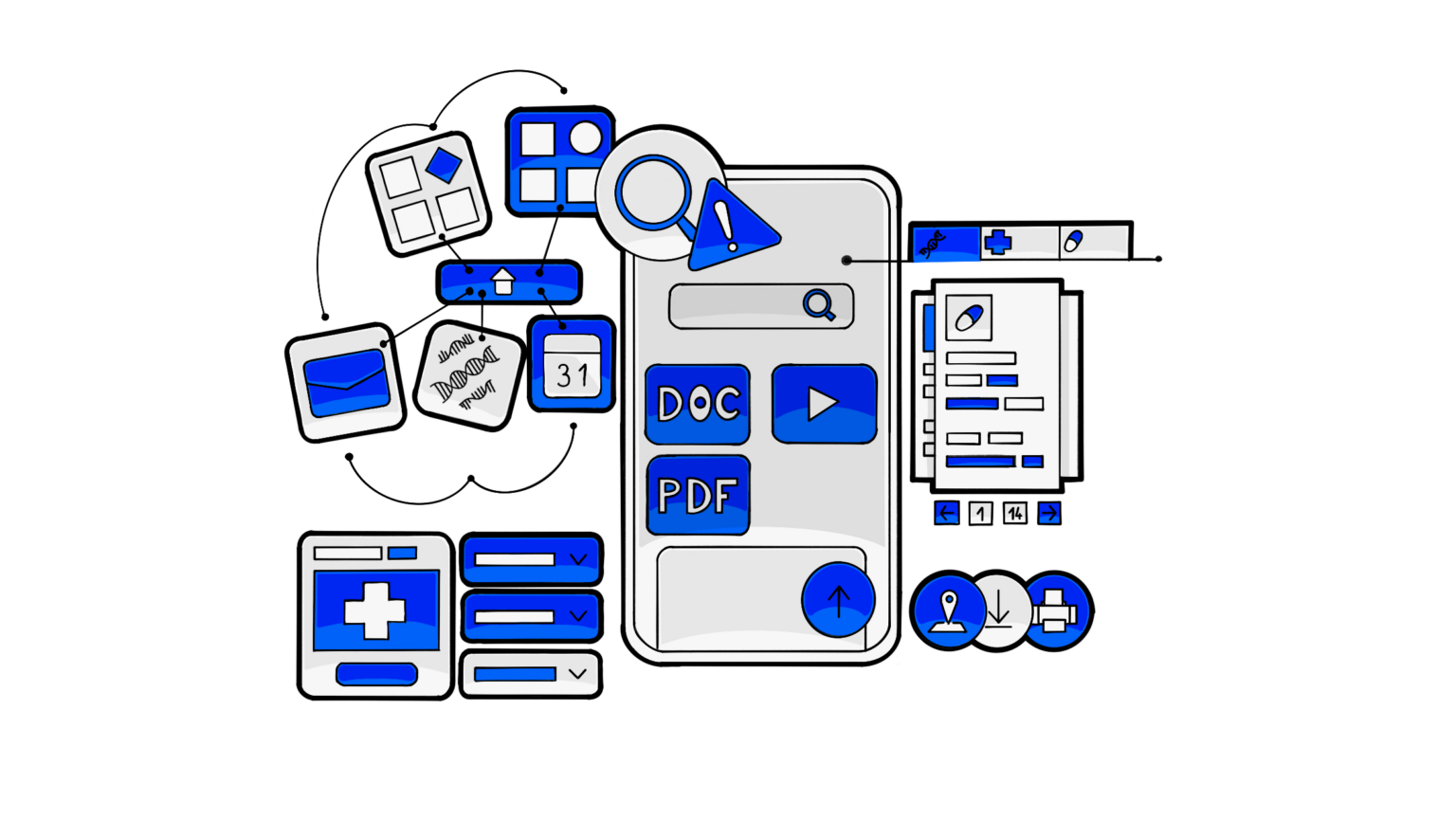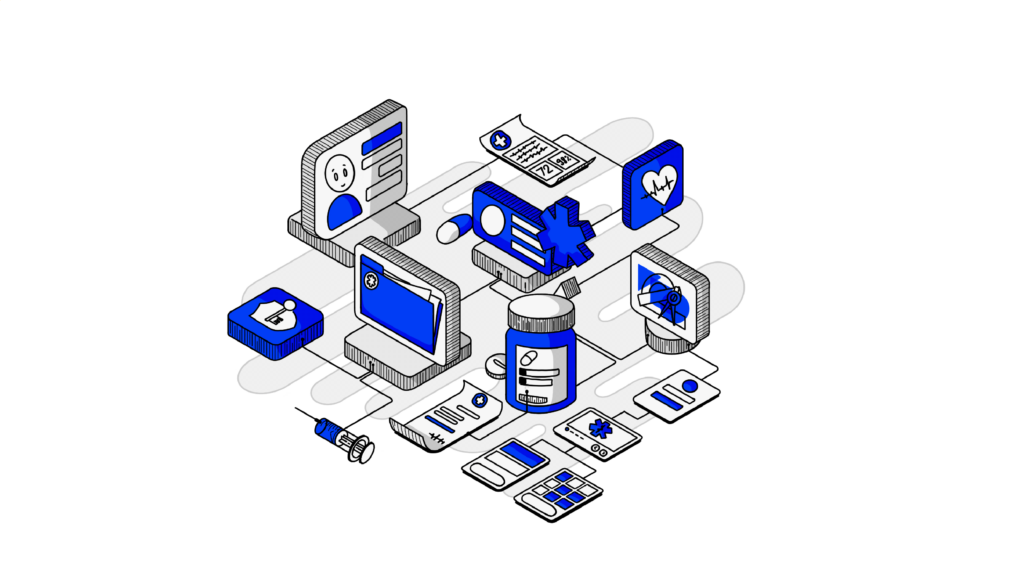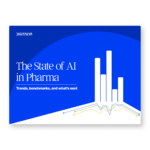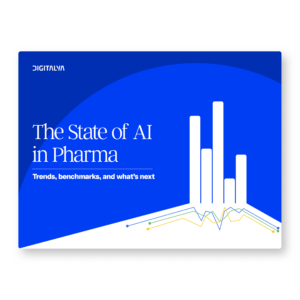1. The bar for HCP digital experiences has changed
For years, pharma companies have measured the success of digital initiatives by the volume of content produced, the number of portals launched, or the sophistication of the technology behind them.
Today, none of that is enough. Healthcare professionals aren’t comparing a medical portal to another medical portal — they’re comparing it to every seamless digital experience they interact with in their daily lives.
Pharmaceutical companies and life science companies, and the broader pharmaceutical industry, are adapting to these new digital expectations by rethinking their HCP engagement strategies and investing in more integrated, user-centric digital solutions. Adopting innovative marketing strategies is essential for meeting these evolving expectations and optimizing HCP engagement.
An oncologist who uses Google Scholar, Spotify, and LinkedIn brings the expectations shaped by those platforms into every digital touchpoint, including those from pharma. They expect clarity in seconds, not minutes.
They expect information to appear in a structured, predictable way. They expect tools that respond instantly and content that doesn’t require a manual to navigate.
This shift is not about attention spans getting shorter; it’s about cognitive load getting heavier. The average HCP juggles complex diagnostics, administrative pressure, constant scientific updates, and patient needs that change hour by hour.
The digital experiences they value most are the ones that remove friction, not add to it. Among the key challenges pharmaceutical companies and life science companies face are overcoming time constraints, technological barriers, and ensuring compliance while meeting these rising HCP expectations.
In this environment, the challenge for pharma is no longer simply publishing scientific information online. The new challenge is making that information instantly usable. It’s about building digital experiences that respect an HCP’s time, align with their mental models, and feel intuitive from the very first interaction. Achieving this requires an omnichannel strategy to deliver seamless, personalized HCP digital experiences across multiple touchpoints.
This is why behavior design, micro-UX, and content rhythm matter. They represent a new way of thinking, shifting the focus from “How much information can we provide?” to “How quickly can an HCP find value?”
The bar has changed because HCP expectations have changed. A new generation of HCPs—many of whom are digital natives—bring a high level of digital fluency and expect seamless, intuitive digital interactions.
And the pharma companies that recognize this shift early will be the ones who build digital experiences that truly resonate. These companies can also build meaningful relationships with HCPs by leveraging advanced digital experiences and personalized engagement.
2. The current state of digital HCP engagement
Despite significant investment in digital transformation, pharma companies still struggle to create the level of clarity and coherence that healthcare providers expect. This gap isn’t rooted in a lack of effort from pharma teams. It’s rooted in how these experiences are conceptualized and built.
To bridge these gaps, pharma organizations must adopt effective engagement strategies and communication strategies that leverage personalized, multi-channel approaches to connect with HCPs more meaningfully, optimizing engagement channels such as digital platforms, webinars, and in-person events. Engaging healthcare professionals through innovative digital approaches is essential for building strategic programs that foster education, communication, and solution promotion.
These gaps reveal why traditional engagement strategies are no longer effective in today’s digital environment. There is a growing need for effective HCP engagement that incorporates personalized communication, data integration, and aligned engagement channels. A new layer of thinking is needed—one that prioritizes a comprehensive digital strategy to drive impactful HCP engagement.
1. Information is abundant, but clarity is scarce
Many portals offer libraries of scientific content, but lack a coherent structure that guides HCPs toward what is most relevant to them. Content is often buried behind multiple navigation layers, or presented in formats that are difficult to consume, like long PDFs, dense text blocks, and pages without clear hierarchy.
2. User journeys are fragmented
HCPs frequently move between emails, medical portals, reps, third-party platforms, events, and social channels — navigating far too many digital channels that rarely feel connected. Managing data flow across these touchpoints is crucial to creating a cohesive experience.
Yet the experience across these touchpoints rarely feels connected. Omnichannel engagement is essential for designing and optimizing seamless, integrated HCP experiences by coordinating and personalizing interactions across all digital channels. Each digital channel tells its own story, leaving HCPs to stitch together a journey that should already be seamless.
3. Navigation reflects internal processes, not HCP mental models
Many portals are structured according to internal organizational logic — brand teams, franchises, functions — rather than the way HCPs naturally seek information. This creates friction from the moment a user lands on a page.
4. Personalization exists, but often at a surface level
While many pharma companies claim their portals are personalized, the reality is frequently limited to basic content recommendations or static role-based filtering. What’s missing is personalization based on behavioral context — across all digital channels — including what the HCP consistently searches for, returns to, or abandons. To enable deeper personalization, it’s essential to gain insights from HCP behavior, and leveraging deeper insights into digital behavior can enable even more tailored and relevant digital experiences.
5. Formats haven’t evolved with consumption patterns
HCPs are increasingly mobile-first, time-constrained, and accustomed to modular, scannable formats. To meet diverse HCP preferences and device types, it is essential to offer content in multiple formats—such as videos, infographics, and articles—which enhances accessibility and engagement. Yet, many digital experiences still rely heavily on long-form PDFs or pages overloaded with text, pushing HCPs toward external resources that offer faster clarity.
Pharma companies have made significant progress in building digital platforms, but the experiences often remain content-heavy, navigation-heavy, and behavior-light. The foundations exist, but they need a new layer of thinking, one rooted in behavior design, micro-UX, and a strategic approach to content rhythm.
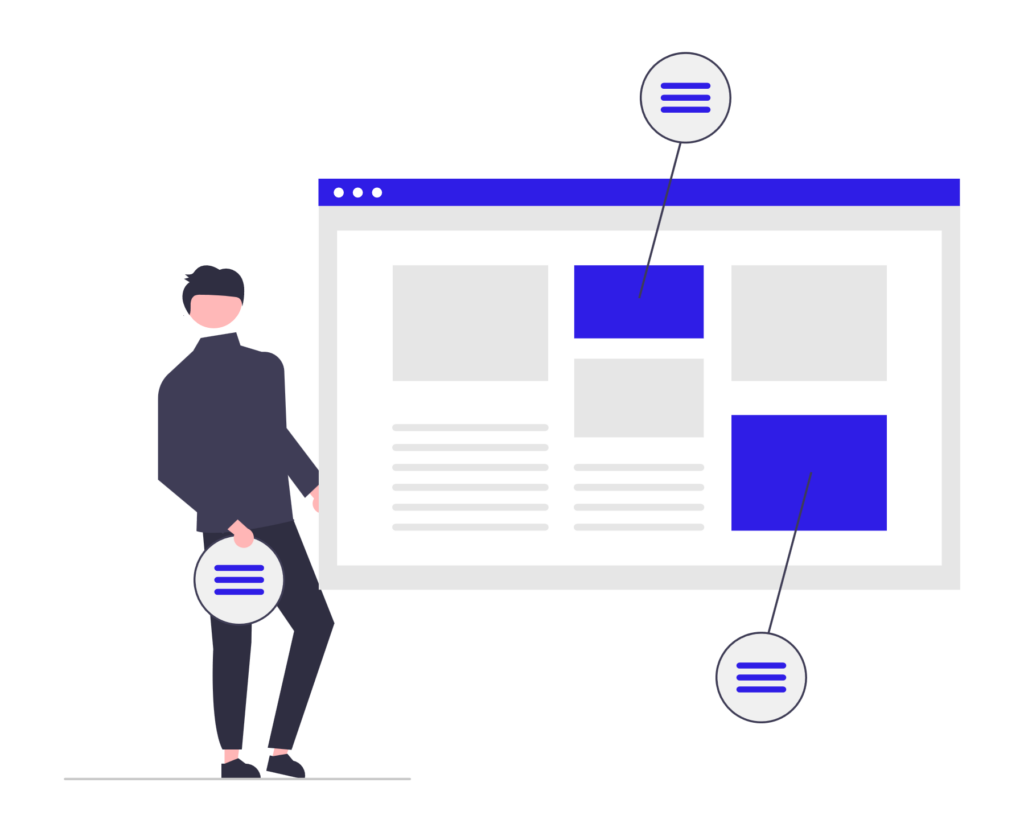
3. Understanding the modern HCP: behavior patterns & digital body language
To design a digital experience that truly serves HCPs, we need to understand not only what information they need, but how they navigate, evaluate, and interact with that information online. Defining the target audience is crucial for tailoring digital experiences that resonate with healthcare professionals’ specific needs and preferences. This is where behavior design and the concept of digital body language become essential.
HCPs reveal their needs, frustrations, and priorities through a constant stream of micro-behaviors across a platform:
- What they search for first
- Where they hesitate
- What they scroll past
- What they return to frequently
- Which formats to avoid
- Which tools do they complete or abandon
- How often they visit, and at what times
Individually, these actions may seem insignificant. But together, they form a behavioral pattern, a readable signal of what matters the most to the user.
Digital body language — a better way to understand intent
Just as in-person communication includes subtle cues — eye contact, posture, pacing — digital communication contains its own set of signals. An HCP’s digital body language might show that they:
- Gravitate toward concise summaries over long-form PDFs
- Repeatedly search for guidelines within the same therapeutic area
- Abandon tools with unclear instructions
- Explore related resources only when contextual suggestions are offered
Interpreting these micro-behaviors gives the pharma industry valuable insights into what healthcare providers truly need from their digital experiences, and these behaviors can inform the design of better digital experiences.
Behavior design — turning signals into meaningful design decisions
Behavior design takes these signals and translates them into more intuitive digital experiences. It shifts the design process from “What do we want to show?” to “How does the user want to move?” Healthcare providers don’t want more choices; they want the right choices surfaced at the right moment.
By making digital interactions more personalized and responsive, behavior design not only improves the user experience but can also contribute to better healthcare outcomes by helping HCPs support patient care through timely, relevant information and streamlined workflows.
Behavior design supports this by:
- Minimizing cognitive load
- Clarifying pathways from the first interaction
- Anticipating decisions based on previous behaviors
- Reducing friction at the exact points where drop-offs occur
- Allowing the interface to adapt to evolving needs
HCP digital behavior has evolved
Modern HCPs are not passive content consumers. They are highly purposeful digital users. They expect:
- Minimal noise around core actions
- Fast access to clinically relevant information
- Tools that respond instantly
- Clear pathways that match their mental models
- Experiences that feel consistent
This shift is not happening in isolation, and it is shaped by platforms that HCPs use daily, from scientific resources to mainstream apps, as well as digital experiences provided by pharmaceutical brands. Their expectations reflect a world where design clarity, speed, and personalization are the baseline. Engaging HCPs digitally is essential to meet these evolving expectations, enabling pharmaceutical brands to build trust, deliver relevant resources, and drive more effective, data-driven interactions.
4. Building trust with HCPs in digital experiences
In today’s digital-first healthcare landscape, building trust with healthcare professionals is the cornerstone of effective digital engagement. For pharma companies, trust is earned not just through the quality of products, but through every digital interaction — whether it’s a virtual conference, a clinical data portal, or a personalized email. HCPs expect digital channels to deliver accurate, up-to-date, and relevant medical information that supports their clinical decision-making and ongoing learning.
Personalized content is a key driver of trust. By leveraging data-driven insights and engagement data from multiple digital touchpoints, pharma companies can deliver targeted, relevant information that aligns with each HCP’s specialty, interests, and preferred formats. This level of personalization demonstrates a deep understanding of HCPs’ unique challenges and needs, making digital engagement more meaningful and effective.
Transparency and consistency are equally vital. HCPs need to know that the information they access, whether treatment guidelines, clinical data, or product updates, is reliable, clearly presented, and easy to find. User-friendly digital platforms that provide straightforward navigation and clear explanations help reduce friction and build confidence.
When pharma companies make it easy for HCPs to access the latest research, treatment guidelines, and medical information, they position themselves as trusted partners in the healthcare industry.
Engaging HCPs in two-way conversations further strengthens trust. Virtual engagement platforms, online forums, and social media channels offer opportunities for meaningful dialogue, feedback, and collaboration.
By actively listening to HCPs’ concerns, responding to their questions, and incorporating their feedback into digital engagement strategies, pharma companies demonstrate a genuine commitment to supporting HCPs and improving health outcomes.
To build lasting trust with HCPs and drive effective digital engagement, pharma companies should focus on the following strategies:
- Develop personalized content: use data-driven insights to deliver relevant information tailored to each HCP’s specialty, interests, and digital behavior.
- Leverage digital channels: engage HCPs through virtual conferences, webinars, online forums, and other digital touchpoints to provide timely, valuable insights.
- Foster meaningful conversations: create opportunities for feedback and discussion, demonstrating a commitment to understanding and addressing HCP needs.
- Provide transparent and consistent information: ensure digital platforms are user-friendly, easy to navigate, and offer clear, up-to-date medical information, treatment guidelines, and clinical data.
- Invest in digital engagement strategies: continuously refine engagement strategies based on HCP preferences and behaviors to build trust and improve health outcomes.
By prioritizing these trust-building strategies, pharma companies can enhance their digital engagement with healthcare professionals, foster stronger relationships, and ultimately contribute to better patient care and improved healthcare outcomes.

5. Behavior design principles for HCP engagement
If the goal of a medical portal is to help HCPs access the right information quickly and confidently, then behavior design becomes one of the most powerful engagement strategies available. It’s the discipline that aligns digital experiences with how people naturally think, decide, and move through information. Selecting the right digital tools is also crucial, as user-friendly and feature-rich platforms can significantly enhance HCP engagement by streamlining content delivery and communication.
HCPs don’t want to explore; they want to accomplish.
1. Reduce cognitive load from the first second
HCPs arrive with a purpose: verify a dose, check a guideline, browse recent studies, or access a tool. But many portals open with competing messages, dense menus, and complex architecture.
Behavior design says: simplify the orientation moment. In practice, this means:
- A clear hero section that states purpose, not slogans
- Minimal choices on the first screen
- A visible search bar with intelligent autocomplete
- Clear category labels aligned with HCP mental models
The faster an HCP understands where to go, the faster they find value.
2. Use choice architecture to guide navigation
Choice architecture helps users make better decisions by presenting options in a meaningful order. In HCP portals, this means guiding them toward:
- high-value content
- clinically relevant tools
- next-step actions
This isn’t manipulation, it’s clarity.
3. Smart defaults save time and reduce errors
Smart defaults are pre-filled, pre-filtered, or pre-structured options that align with typical user intent. For HCPs:
- Filters can default to the most common specializations
- Calculators can pre-load standard parameters
- Guideline libraries can open on the latest update
- The portal can surface previously viewed content
Every avoided decision reduces cognitive load and frustration.
4. Prioritize immediate value
If an HCP doesn’t find value within the first five seconds, the risk of bouncing increases dramatically. Behavioral research shows that early clarity triggers confidence and engagement.
Immediate value in an HCP portal looks like:
- “Start here” modules
- The most searched resources placed above the fold
- Structure summaries before long-form content
- Persistent access to key tools
5. Minimize friction at key decision points
Every journey has moments where users pause, hesitate, or feel uncertain. Behavior design identifies those friction points and removes them.
For HCPs, this often appears in moments such as:
- Deciding which version of a guideline to read
- Figuring out how to download or share a resource
- Navigating a deep menu structure
- Understanding whether a tool is reliable or updated
The goal is to reduce the effort needed to reach clarity.
6. Use behavioral triggers to encourage return visits
The best digital experiences are habit-forming. Not addictive, but useful.
Pharma can leverage behavioral triggers ethically by:
- Sending update notifications based on specialty or interests
- Highlighting “new since your last visit” content
- Offering progress or activity summaries
- Maintaining a predictable content rhythm so HCPs know how to return
7. Align experience with HCP mental models, not internal structures
Most friction arises when the portal reflects internal organization instead of user thinking. Behavior design reverses this. It starts with:
- Real tasks HCPs perform
- The real language they use
- Real problems they face
- Real journeys they follow
When the interface aligns with these mental models, the experience becomes intuitive by design.
This is not about adding more features or redesigning pages, but about reducing effort, increasing confidence, and enabling HCPs to accomplish their goals with minimal friction. It’s the foundation upon which all modern digital experiences are built.
6. Micro-UX: the invisible power behind a frictionless experience
If behavior design provides the blueprint of how HCPs move through a digital experience, micro-UX is the layer that makes every step feel effortless. It’s the collection of tiny interactions, barely noticeable when they work well, painfully obvious when they don’t, that shape an HCP’s confidence, clarity, and trust.
Micro-UX plays a crucial role in effective engagement by enabling personalized, seamless, and data-driven interactions that help build trust and improve resource delivery for HCPs. Optimizing micro-UX for mobile device access is essential, as healthcare professionals frequently use smartphones and other mobile devices to access clinical and medical information.
In a medical portal, micro-UX isn’t ornamental. It’s a foundational engagement strategy that shapes trust, clarity, and task completion.
When micro-UX is weak, digital engagement drops immediately — not because the content is wrong, but because the experience feels effortful.
1. Why micro-UX matters for HCPs
HCPs are highly purposeful users. They move quickly. They make decisions fast. And they rarely tolerate unnecessary complexity.
Every micro-interaction — every click, hover, loading state, or confirmation message — shapes how they perceive the platform. This helps:
- Reduce hesitation
- Clarify action
- Prevent errors
- Reinforce trust in the information
2. Micro-interactions that improve clarity
Micro-UX turns uncertainty into understanding through subtle cues. Examples include:
- Hover states that clarify which element is clickable
- Tooltips that define scientific terms or explain tools inputs
- Expanding panels that reveal additional context without forcing page reloads
- Inline validation that shows if input data is correct
These small cues reduce cognitive load and give HCPs confidence that they’re on the right path.
3. Meaningful loading states build trust
Pharma portals often handle large datasets, real-time calculations, or multi-step logic. A blank screen or a generic message during load time creates uncertainty.
4. Errors states that guide, not frustrate
HCPs don’t have time for trial-and-error. Error states should not blame the user; they should guide them.
Good micro-UX provides:
- Clear explanations
- Suggested fixes
- Examples
- Real-time validations to prevent errors before they occur
In a clinical calculator, for example, an error message must be unambiguous, contextual, and reassuring.
5. Smarter navigation through micro-patterns
Micro-UX patterns help them navigate vast information seamlessly. These patterns include:
- Sticky headers for quick access to search or filters
- Back-to-top microbuttons for long guidelines
- Micro-animations that show where a newly opened section appears
- View toggles
- Tag chips
Understanding HCPs’ channel preferences, such as favoring webinars, online journals, or video conferencing, can inform the design of navigation patterns, ensuring the interface aligns with their preferred ways of accessing content. Designing for HCPs’ preferred channels is essential to optimize both navigation and engagement.
These subtle features dramatically reduce time-to-value.
6. Mobile-first micro-interactions
HCPs frequently access portals from smartphones, especially during clinical tasks or between patient consultations. The growing use of mobile apps by HCPs for accessing medical information and resources highlights the need for seamless, mobile-friendly experiences. Micro-UX must support:
- Swipeable tabs
- Sticky CTAs
- Mobile-friendly calculators
- Thumb-reach navigation
- Responsive content blocks
This is where many pharma portals fall short, and where small improvements create disproportionate impact.
7. Component libraries create consistency
One of the strongest webinar takeaways was the importance of design systems and component libraries. Micro-UX thrives on consistency.
If every page uses different interactions, layouts, or labels, the user must constantly re-learn the interface. A component library ensures that:
- Buttons behave consistently
- Tooltips look the same across pages
- Cards follow the same hierarchy
- Content blocks are predictable
Predictability increases usability. Usability increases trust.
This is the difference between a portal that feels heavy and one that feels invisible. HCPs don’t want to think about the interface; they want to think about their clinical decisions.

7. Content rhythm: the missing link in most medical portals
In some organizations, content strategy still revolves around volume: creating more materials, publishing more updates, and filling portals with as much information as possible. However, HCP’s reward structure, predictability, and usability. This is the essence of content rhythm, and an often-overlooked component of a high-performing HCP digital experience.
Content rhythm is about cadence, flow, and architecture of content that allows healthcare professionals to navigate complex information with ease. When done well, it reduces cognitive load, increases trust, and helps clinicians build a natural habit of returning to the platform. When absent, even excellent content becomes hard to find, hard to follow, and easy to forget.
Instead of a monolithic document, information can be broken into structured blocks: concise summaries, expandable sections, evidence highlights, key practice implications, visual data, and logically grouped references. This modularity makes content easier to scan, understand, and revisit, especially for clinicians who often access portals in brief windows between patient responsibilities.
Predictability is just as important. When every page follows a familiar pattern — summary first, details next, supporting materials afterwards — HCPs don’t have to relearn the interface every time they open a new resource. Consistency across pages is a form of cognitive relief. It helps clinicians focus on the content itself, rather than the mechanics of finding it.
Content rhythm also extends far beyond the portal. Modern HCP journeys frequently cross multiple digital channels — emails, medical portals, rep touchpoints, congress materials, social media, webinars — and the narrative must feel coherent across all of them. Virtual events and virtual meetings, such as webinars and online conferences, play a key role in supporting ongoing engagement and education for HCPs.
At the same time, in-person meetings and interactions remain essential, as many healthcare professionals still value face-to-face engagements for building trust and deeper conversations. Pharma HCP engagement strategies now include both digital and in-person touchpoints, integrating virtual events, live events, and hybrid approaches to create meaningful, personal interactions.
A well-orchestrated rhythm ensures that an email naturally flows into deeper content on the portal, which, in turn, feeds into meaningful discussions with reps and follow-up materials after an event. HCPs shouldn’t feel as though each channel is telling a different story; they should experience one continuous, well-structured conversation.
Content rhythm plays a crucial role in making personalization contextual: if an HCP consistently chooses brief summaries, the platform can prioritize that format; if they revisit a topic monthly, the platform can surface updates in that cadence; if they avoid long-form formats, the system can surface modular content instead. Rhythm gives personalization more substance and relevance.
This makes content rhythm one of the most powerful long-term digital engagement strategies for building habits and sustaining interest.
In essence, content rhythm turns a portal from a static library to a dynamic, predictable, and usable ecosystem. It’s the engine that makes content not just available, but actionable, findable, and habit-forming — and it’s one of the biggest opportunities for pharma teams designing the modern HCP digital experience.
Life sciences marketing is critical for orchestrating multi-channel engagement strategies, ensuring compliance, driving data-driven optimization, and maintaining a unified approach across all touchpoints.
8. Integrating the three elements: a framework for the modern HCP digital experience
Behavior design, micro-UX, and content rhythm are powerful on their own, but their real impact emerges when they work together as a unified system. The best digital experiences are not the result of one brilliant feature or one perfect piece of content — they are the outcome of multiple layers working in harmony.
This integration creates an environment where HCPs feel guided, supported, and understood from the moment they land on a page until they complete a task. Coordinated marketing efforts, including targeted content delivery, interactive demos, and data analytics, can further enhance the overall HCP digital experience.
Together, these components form a self-reinforcing loop:
- Behavior design reveals what HCPs need
- Micro-UX supports them at the exact moment they take action
- Content rhythm sustains engagement and encourages them to return
This loop continuously strengthens over time. As more behavioral data merge, micro-interactions can be refined, content can be reorganized or reprioritized, and new patterns of engagement can be identified. The experience becomes more adaptive, more intuitive, and more aligned with real-world clinical workflows. Leveraging this data allows organizations to deliver personalized content to HCPs, increasing relevance and engagement.
Pharma companies that apply these principles across their digital channels will elevate both the HCP digital experience and their overall digital engagement.
The bar for HCP digital experiences has changed. The organizations that rise to meet it will be the ones that design with intention, with empathy, and with a deep understanding of what healthcare professionals really need. These organizations can foster meaningful relationships and engage HCPs effectively through their digital strategies.
